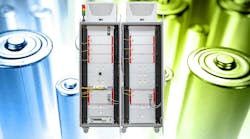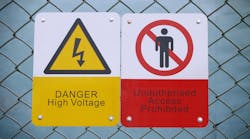A load switch is simply a switch, mechanical or electronic, that connects or disconnects a load to the high side of a power source. A wall light switch is a load switch. Any off/on switch on an appliance or electronic product is a load switch. A relay can be a load switch.
However, a load switch is also a small electronic switch used in many products to configure and manage power distribution. You can make a load switch with discrete components, but there are significant advantages to using a fully integrated IC load switch. This article presents an option you may not know is available.
Load-Switch Concept
Figure 1 shows the simple idea of a load switch, where a power source provides a voltage to one or more loads. The switches are controlled by a microcontroller unit. The source is typically dc, but an ac source is possible. Different types of load switches are used for dc and ac—we will focus on dc load switches here.
Load switches are used to connect and disconnect a load from a source to power up or down, or to save energy when a load isn’t needed. They can also be used to sequence power off-on operations. These switches find homes in many products, including smartphones, tablets, laptops, digital cameras, watches and wearables, portable instruments, as well as other battery-operated devices.
How Load Switches Work
The most common type of dc load switch is a MOSFET (Fig. 2). This discrete-component switch employs a series P-type MOSFET and a gate-control MOSFET. The control transistor is usually driven by the GPIO output of a microcontroller.








